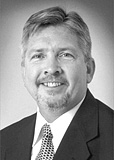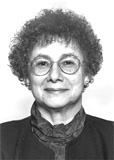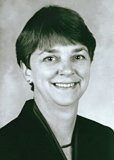 |
Norman Werth Schaad. Born Myrtle Point, Oregon, 1940. Raised on a potato production and alfalfa seed farm in Prosser, Washington. Received BS, MS (virology), Ph.D. (bacteriology) in plant pathology from University of California, Davis in 1964, 1966, and 1969, respectively. Completed a post doctoral appointment at U.C. Davis with Prof. C. I. Kado, 1969 to 1971. Assistant professor (1971), associate professor (1977), and professor (1982) of plant pathology, University of Georgia, Experiment, Georgia. Associate professor (1982-1984) and Professor (1994-1986) of seed pathology, University of Idaho, Moscow, Idaho. Director of Biotechnology, Harris Moran Seed Company, Gilroy, California, 1986-1992. Research leader (1992-1998) and research phytobacteriologist (1998-present), ARS, Ft. Detrick, MD. Published over 100 reviewed journal papers, several book chapters, and edited several laboratory manuals including 'Laboratory Guide for Identification of Plant Pathogenic Bacteria' published by APS Press. Past associate editor of Phytopathology and presently associate editor of Seed Science & Technology.
|
 |
Joe Shaw received his doctoral degree from the UC Davis Deptartment of Plant Pathology (1987) where he studied with Clarence Kado. Afterwards he worked as a postdoctoral scientist with Bill Dawson at UC Riverside. He was an associate professor in the Dept. of Botany and Microbiology at Auburn University AL (1988-1998). In 1996 he accepted appointment as a visiting professor at Brooks Air Force Base in San Antonio working to introduce molecular diagnostic methods into the Air Force Epidemiology Division in the laboratory of Ms. Ferne McCleskey.
Presently he is employed at the Institute of Molecular Biology at the University of Scranton, Scranton PA. He oversees an ongoing project to sequence and annotate the genome of Haloferax volcanii, an extreme halophile. He also assists in the institute's analyses of bacteria that have strong potential for use as biological warfare agents directed against humans.
|
 |
Anne M.K. Vidaver. Native of Vienna, Austria. Received BA (Biology) from Russell Sage College, NY followed by MA, PhD (Bacteriology) with a minor in Plant Physiology from Indiana University-Bloomington. Began career with undergraduate summer employment at Brookhaven National Laboratory (1958-1959) followed by research associate experience in Plant Pathology at the University of Nebraska (1966-1972), Assistant Professor of Plant Pathology, University of Nebraska (1972-1974), Associate Professor of Plant Pathology, University of Nebraska (1974-1979), Professor of Plant Pathology, University of Nebraska (1979-present), Director, Center for Microbes in Managed Ecosystems, University of Nebraska (1989-1992), Head, Department of Plant Pathology, University of Nebraska (1984-present), Interim Director, Center for Biotechnology, University of Nebraska (1988-1989), and Director, Center for Biotechnology, University of Nebraska (1997-present).
Research interests focus principally on plant-associated bacteria including systematics, epidemiology and control; plasmid, bacteriophage and bacteriocin characterization and genetics. She also has interest in research policy issues. This work has led to being advisor or consultant to several companies and several Federal agencies, including membership on the NIH-RAC (Recombinant DNA Advisory Committee) and USDA-ABRAC (Agricultural Biotechnology Research Advisory Committee). She has authored or co-authored over 180 scientific articles and a book. In collaboration with colleagues, she also holds two patents.
|
 |
Jan E. Leach received her M.S. degree in microbiology from the University of Nebraska, Lincoln, and her Ph.D. degree in plant pathology from the University of Wisconsin, Madison. After a postdoctoral position at East Malling Research Station, Kent, England, she joined the faculty of the Department of Plant Pathology at Kansas State University, Manhattan, where she is currently a University Distinguished Professor. Her research interests include studies of the molecular basis for race-specific resistance in rice to Xanthomonas oryzae pv. oryzae. In collaboration with scientists from the International Rice Research Institute, she has developed tools to study the population structure of X. oryzae pv. oryzae.
|
 |
Barry J. Erlick, Ph.D., Chief Scientist, Special Interagency Programs, Agricultural Research Service, U.S. Department of Agriculture.
Dr. Erlick attended the University of Texas at Arlington, earning BS degree in Chemistry, Biology and Physics in 1968. He received a MS degree in Microbial Genetics and Biochemistry from Texas Christian University in 1970 and a Ph.D. in Molecular Genetics and Microbiology from Hahnemann Medical College and Hospital, Philadelphia in 1974.
From 1974 to 1975 he completed a Postdoctoral Fellowship in the Department of Oncology and Genetics at Hahnemann Medical College and Hospital in collaboration with the National Cancer Institute, Bethesda, Maryland. Between 1975 and 1978 he held joint positions of Assistant Professor in the Departments of Biochemistry and Medicine and was the Director of the Division of Tumor Biology of The Cancer Institute of Hahnemann Medical College and Hospital.
Between 1978 and 1982 he served as a Principal Research Investigator and Deputy Chief, Viral Biology, U.S. Army Medical Research Institute of Infectious Diseases (USAMRIID) Fort Detrick, Frederick, Maryland.
In 1982 Dr. Erlick joined U.S. Army Medical Information and Intelligence Agency, renamed the Armed Forces Medical Intelligence Center (AFMIC) in 1986. Since 1982 he served in numerous senior level positions for AFMIC and the Defense Intelligence Agency (DIA) including; Chief of the Scientific & Technical Division and Chief Scientist, AFMIC; Chief of the Department of Defense (DoD) Biological Threat Analysis Center; Chairman of the Chemical and Biological Warfare Subcommittee of the Weapons and Space Systems Intelligence Committee of the Director of Central Intelligence; and Senior Scientist and Deputy Chief of the Chemical and Biological Warfare Analysis Division, DIA. Included in his numerous national awards is the National Intelligence Medal of Achievement. He served as the Defense Intelligence Agency’s Chief Scientist for Biological and Chemical Warfare before joining the Department of Agriculture in June this year. |
